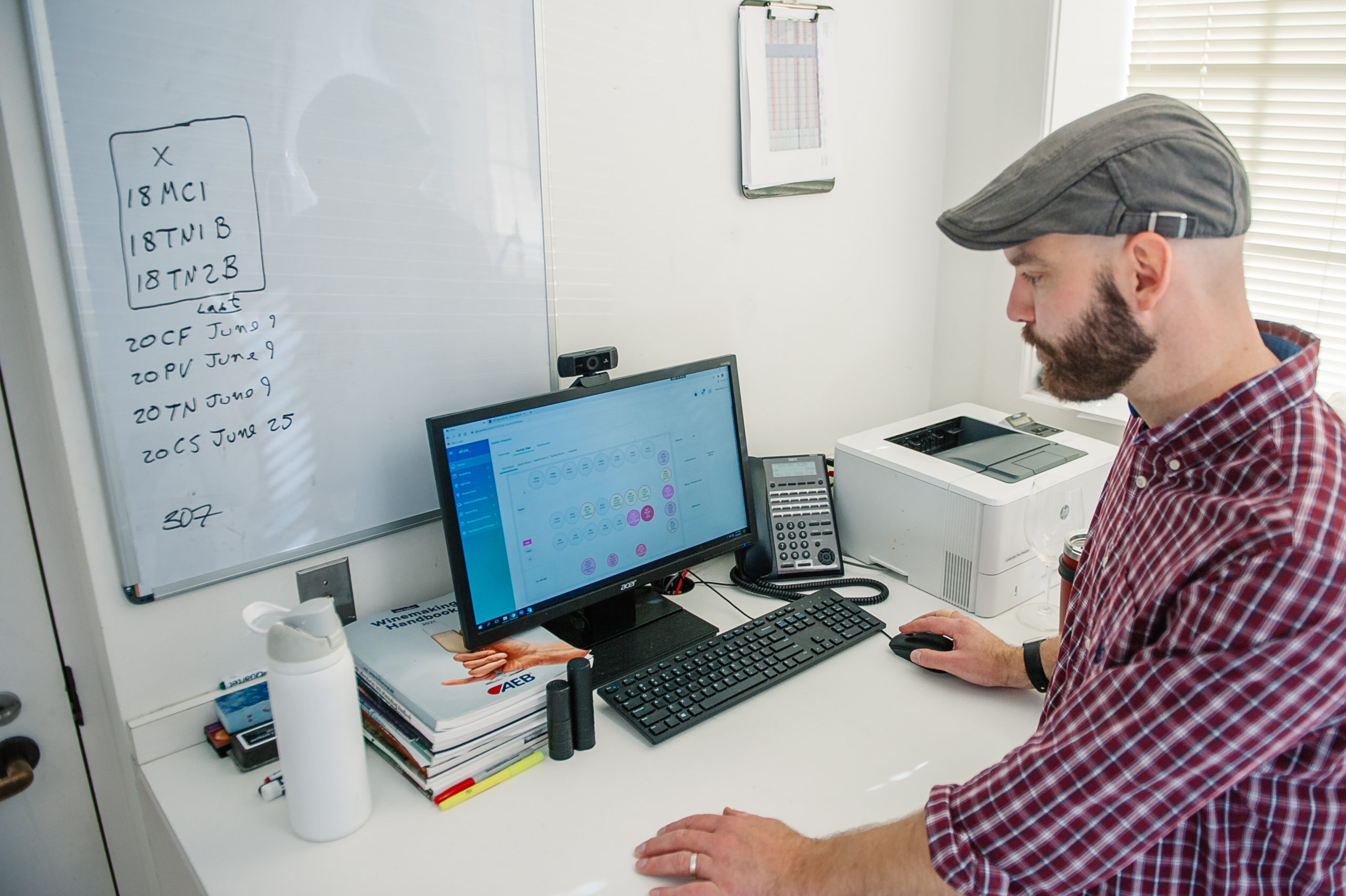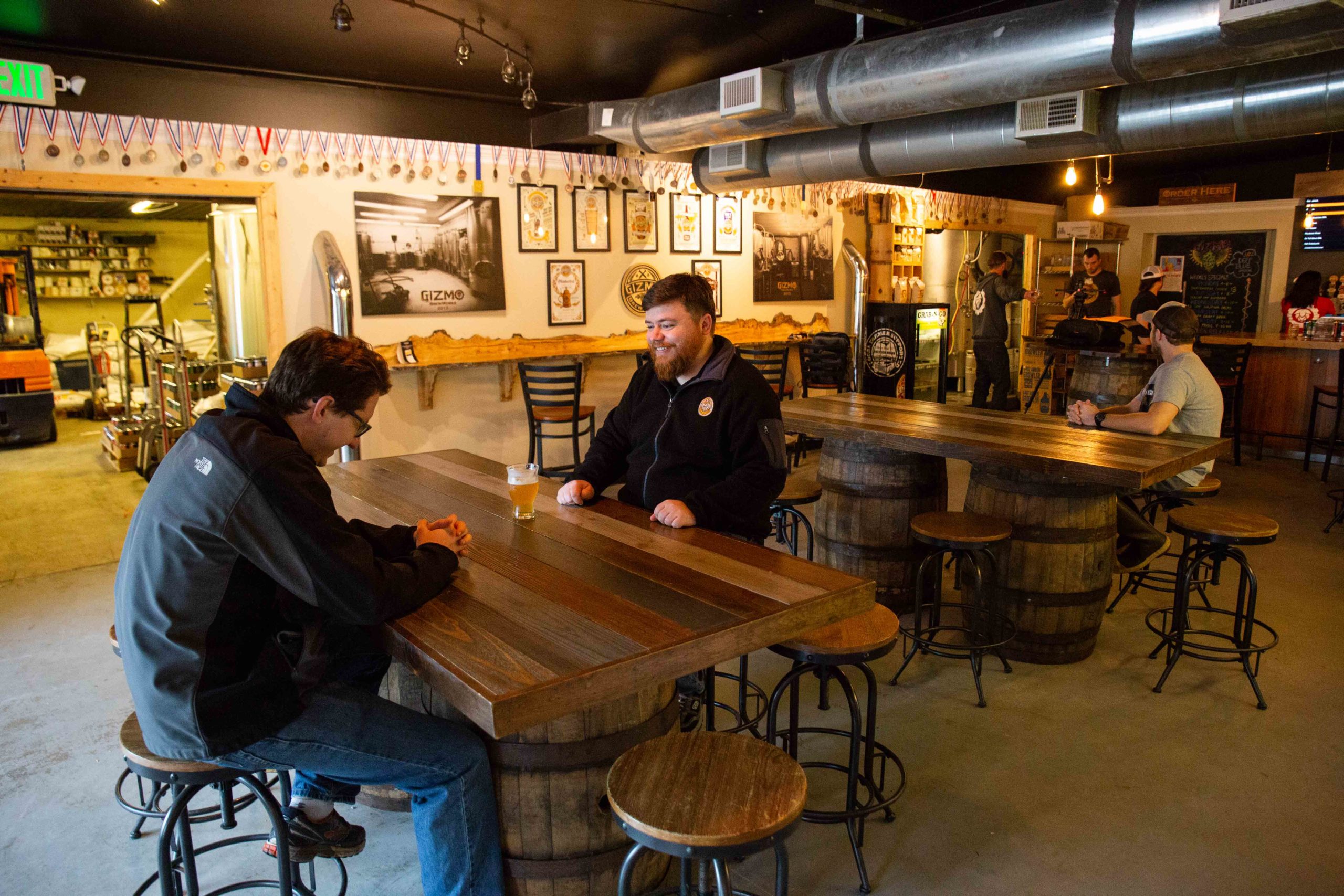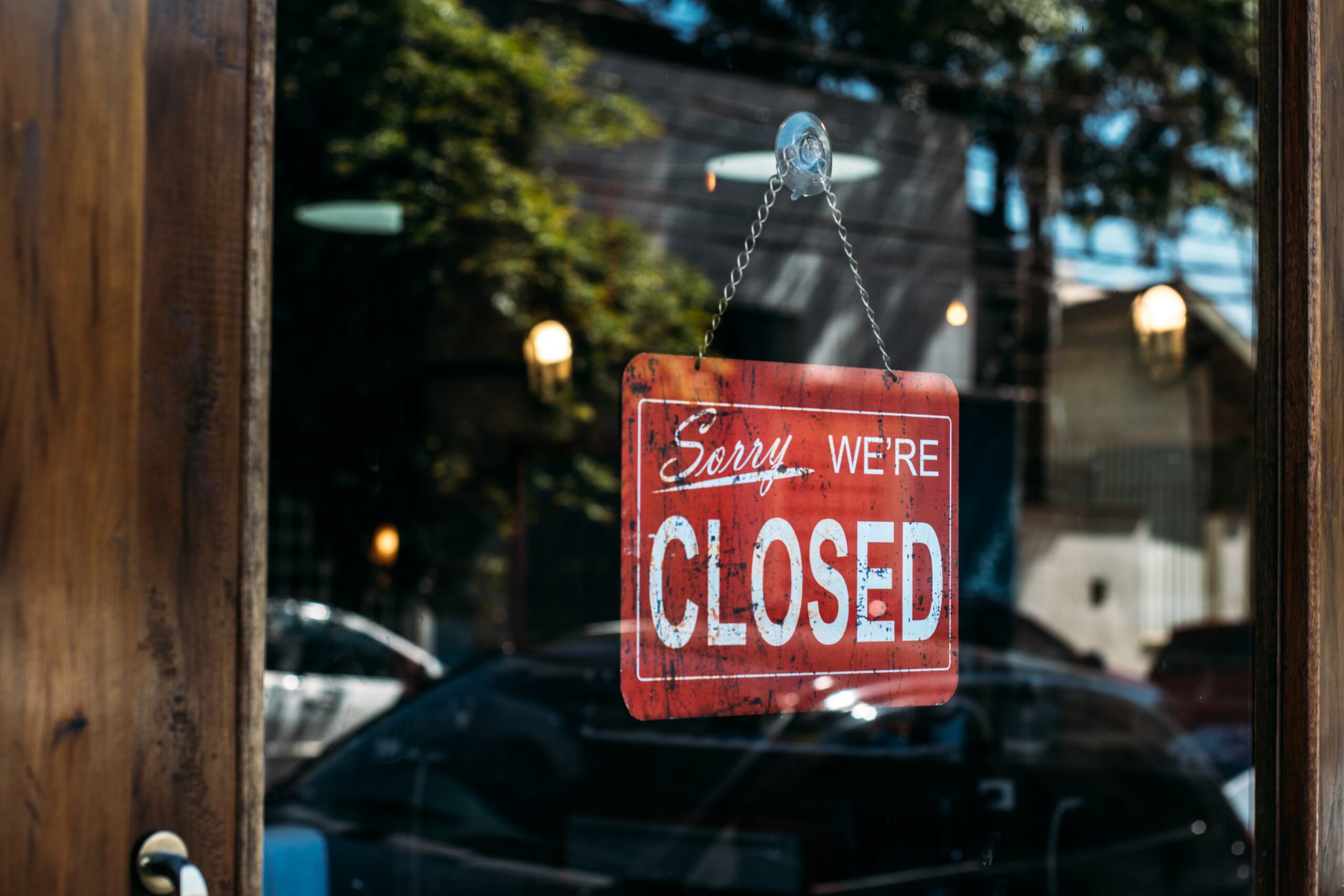Technology has increasingly become an essential part of running a wine business. From tracking lots in a production software to reconciling daily tasting room sales with your point-of-sale system, technology is now an everyday tool that can help wineries work more efficiently.
You may still rely on old methods of pen and paper production logs and invoices. So, how will you know when it’s time for your winery to take the next step with implementing technology? Let’s dive into how the technology landscape has changed in the last few years and how it can change your winery.
This blog was inspired by a conversation at this year’s Ekos_Con, the annual Ekos user conference. Sal Narisi, customer implementation specialist at Ekos, got to chat with Ethan Brown, winemaker at Shelton Vineyards, and Zach Kamphuis, VP of Business Development at Commerce7, to learn about the intersection of wine and technology.
Building Your Tech Stack
Shelton Vineyards, where Ethan Brown works as the winemaker, used 2020 as an opportunity to boost technological presence and implement new tech tools. He said that the vineyard’s primary goal was to have all parts of their business talk to one another — production, sales, accounting, and inventory.
The team at Shelton is taking things step-by-step. Ethan says they started seeking out software solutions in the winter when the winery was quiet. This gave the team time to weigh their options and choose the best fit for their business. Then, they were able to complete onboarding in the first quarter — without the distractions of harvest, spring and summer events, and a busy tasting room.
Ultimately, the team chose Ekos for winery management and Commerce7 for point-of-sale. Since choosing these, Shelton has slowly migrated away from their old programs and spreadsheets but has held on to a few old elements while they get their ducks in a row.
You don’t need to look at tech adoption as an “all or nothing” scenario — you can continue to use spreadsheets and handwritten notes while you learn how to most effectively use your software solutions. Taking the time to really learn best practices for your solution is going to make all the difference for long-term success in using technology for your winery.
Ethan said he understands why wineries, especially smaller ones, are intimidated at the prospect of adopting technology in their business — it seems like a huge undertaking, and why change when what you’re doing works just fine? He used to think the same way. In the last year or so, however, he’s seen dramatic improvements in Shelton’s ability to implement standard operating procedures and the visibility surrounding COGS and other important metrics. Plus, he says their investment has “revolutionized” the way Shelton tracks inventory. Consider your first steps into the tech world a long-term investment.
A complete explanation of different types of winery software »
Getting Started
Many wineries get started implementing technology into their business with wine clubs, a sector whose popularity has grown in recent years. The first big wine club was founded 50 years ago, and niche-focused wine clubs like those for organic and biodynamic wine have driven the popularity and complexity of wine clubs more recently. Wine clubs mean you need a direct-to-consumer shipping solution and point-of-sale system. This investment in software has paid off for wineries: wine clubs are now the second-largest sales channel for wineries behind the tasting room. But while many wineries have DTC software, they often don’t look to further improve their tech stack.
According to Ekos’s 2022 State of Technology Adoption in the Wine Industry report, wineries rank themselves a B- in technology adoption, a lower score compared to the brewing industry. The rise in popularity of wine clubs has strongly contributed to this shift in technology adoption and offers a huge opportunity for wineries to create more sales: with a constant number of subscribers, you have a good idea of what products are selling and why, plus recurring revenue (which is especially helpful in quiet months).
Although wine club software seems to be standard practice, many wineries struggle to move beyond DTC technology, despite the benefits. Did you know that wineries that use technology to personalize customer communication are 5.9x more likely to convert site visits to sales? If you’ve been interested in expanding your winery’s technological capabilities, read on.
Finding a More Comprehensive Solution
Winery management software is the glue that holds a winery’s tech stack together. The features of winery management software vary from platform to platform, but generally focus on helping you with production, inventory, sales, and accounting.
Right now, most wineries use spreadsheets or no software at all to manage their business. Though many of these wineries have adopted tech solutions to manage their wine clubs, they haven’t taken the next step into the world of winery management. Many of these wineries are filling in the gaps with point solutions like QA/QC programs, ecommerce platforms, and more.
Utilizing technology at your winery can streamline your workflow and increase efficiencies across the business. With winery management software, you can keep all pieces of your business in one place: from sales and accounting to production and inventory, technology can open doors between your teams.
If you’re thinking about a full-fledged winery management software solution, consider these thoughts:
- Choose a software that will grow with your team and your business. You’re going to change over time, and your software solutions should too.
- What areas of your business do you struggle with the most? Prioritize software that helps you streamline processes in those areas.
- What goals is your winery pushing to achieve? How do you communicate those goals to your team? Software can help you easily check in on key business metrics.
- How tech savvy is your team? This might not change the solution you go with, but it may impact the onboarding experience you look for.
Not all winery management software is equal when it comes to access and teamwork. Centralized, cloud-based winery management solutions offer a place for teams to work collaboratively and effectively. While your accountant is running your latest TTB report, your winemaker can track lots in production and assign tasks to their team all while your tasting room employees are serving customers. Their work as a team is essential to your business’s success, so make sure you choose technology that helps you keep track of it all in one place.
In addition to improving efficiency and communication, winery management software can help with employee buy-in to your initiatives and goals. When your business’s most important metrics are visible everywhere, your team will see their contributions in real-time as goals are achieved and, hopefully,feel a stronger sense of ownership and responsibility for the health of your company. You’re trusting your employees to see, understand, and contribute to the bottom line, and that’s powerful.
Technology adoption sounds scary, but the work you put in to develop solid software best practices for your winery will lead to long-term benefits. From the basics, like tracking what inventory you have on hand, to more complicated tasks like TTB reporting, technology can give your business clarity, simplified task delegation, and more.



